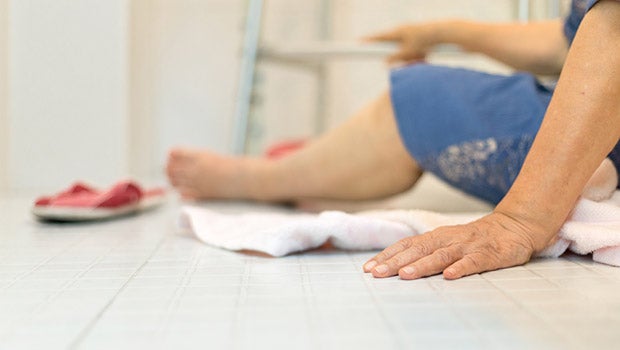
A slip on the bathroom floor or a missed step going downstairs may mean a scratch or a bruise for most of us. But for the elderly, a fall can mean more serious implications. In Singapore's Emergency Departments (ED), 85% of all trauma in elderly are falls. It is a leading cause of death and disability in the elderly, and studies have also shown that half of elderly who experience a fall will have a recurrent fall in the following year.
"Singapore is facing the challenge of a rapidly aging population and we are certainly seeing more elderly who turn up at the SGH ED after falls. The fall often triggers a progressive decline with fear of falling, reduced mobility, and difficulty with self-care," explained Associate Professor Marcus Ong, Senior Consultant, Department of Emergency Medicine, Singapore General Hospital (SGH).
A research team led by Professor David Matchar, Director of the Health Services and Systems Research Programme at Duke-NUS Medical School, has now shown that a tailored physical therapy programme known as Steps to Avoid Falls in Elderly (SAFE), can reduce bad falls in the elderly.

Madam Juriyah bte Komzari, 69, fell while walking down a set of stairs three years ago. After discharge from the CGH Emergency Department, she was offered to participate in the SAFE study. She received a tailored physical therapy programme to prevent further falls, tailored to her physical ability. Mdm Juriyah said, "I'm now more confident to walk on my own. When taking public transport, I know how to balance myself better. It's also fun and enjoyable – I've made new friends at the group exercise sessions!"
The study, a collaboration between Duke-NUS, SGH, Changi General Hospital (CGH) and Agency for Integrated Care, recruited 354 elderly patients who previously sought medical attention at EDs for a fall or fall-related injuries. Half of them were assigned to the SAFE programme, where they received individualised intensive physical therapy, while the other half were given the usual services.
The patients were then followed up for nine months. The team found that participation in the programme did not reduce the number of subsequent falls, but it did significantly reduce the severity of falls. Specifically, receiving physical therapy reduced the risk of falls that require medical attention or restrict daily activities by almost 50%.
"What is also particularly interesting about this study is that the elderly in Singapore seem to fall less than their counterparts worldwide. Whether this is from reduced mobility due to the assistance of their families and caregivers, or due to some other reason is yet to be determined, and something we are currently working on," said Prof Matchar.
The team also observed that the health of the patient influenced the outcome of the programme: SAFE reduced the fall risk to almost 70% in participants with no more than one major medical condition, but has no significant effect on those with multiple conditions.
"[Falls prevention programmes] cannot be applied uniformly in all patients with expectation of similar results."
- Prof David Matchar, Director, Health Services & Systems Research Programme, Duke-NUS
Prof Matchar explained, "This reinforces that a falls prevention programme is complex and needs to be individualised based on patient's comorbidities. It cannot be applied uniformly in all patients with expectation of similar results."
The team is now looking for the "sweet spot" where the programme can be replicated on a bigger scale and be sustainable. This involves creating a model that engages patients, manageable for providers, adaptable to existing health-delivery system and integrating it with community programs.
Implementation of such physical therapy programmes will be integral in connecting emergency medicine physicians with community-based physical therapists, to extend the continuum of care for elderly fall patients and prevent future visits to the ED due to falls.
| Removing barriers Dr Christopher Lien, a Senior Consultant Geriatrician at CGH, said that there is usually very low participation of physical therapy programmes, with only about a third of patients turning up after being referred to it. Dr Lien explained how SAFE increased the participation: "In the study, we tried to identify the barriers patients face in participating in such a programme and removed them. Our team follows up with the patients closely through phone calls, and our coordinators make all the arrangements for them. We also paid the patients' transport fees to go to the community exercise sessions." Existing group exercise programmes are often too difficult for some patients, or too easy for some others. In addition, according to Ms Mina Lim, St Andrew's Community Hospital's Deputy Director of Community Programmes and physiotherapist by training, patients sometimes do not go to their exercise sessions because they find themselves doing the same things over and over again. Ms Lim explained, "In SAFE, our physiotherapists prescribe the exercises to the correct 'dosage' for our patients, much like a physician prescribes medicine." |













 Get it on Google Play
Get it on Google Play